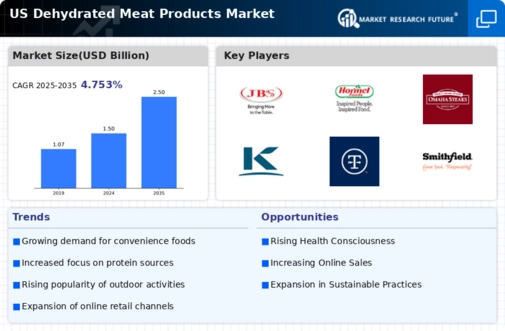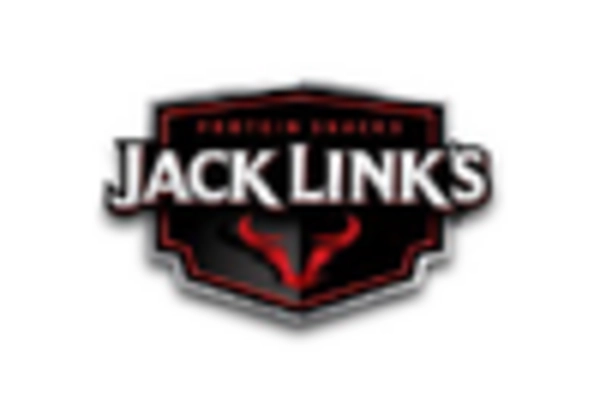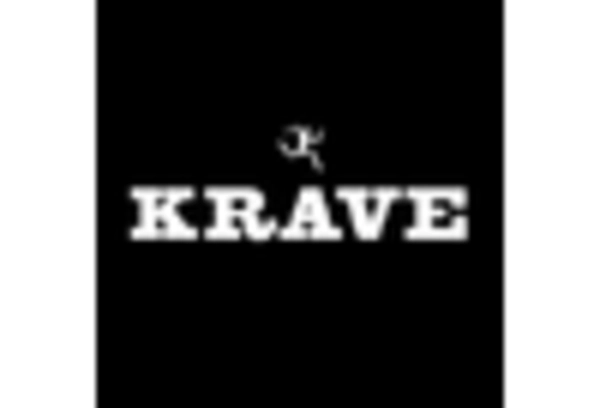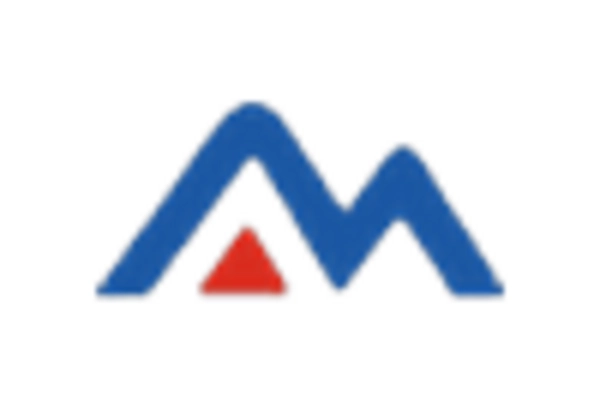Shift Towards Clean Label Products
The dehydrated meat-products market is influenced by a notable shift towards clean label products, as consumers become more discerning about food ingredients. There is a growing demand for transparency in food labeling, with consumers seeking products that contain minimal additives and preservatives. This trend is particularly relevant in the dehydrated meat-products market, where consumers are increasingly interested in natural and organic options. Recent surveys indicate that nearly 70% of consumers prefer products with clean labels, which has prompted manufacturers to reformulate their offerings. This shift towards clean label products presents an opportunity for the dehydrated meat-products market to innovate and cater to the evolving preferences of health-conscious consumers.
Growing Popularity of Outdoor Activities
The dehydrated meat-products market is experiencing growth driven by the increasing popularity of outdoor activities such as camping, hiking, and backpacking. As more individuals engage in these activities, the demand for lightweight, non-perishable food options rises. Dehydrated meat products are particularly appealing to outdoor enthusiasts due to their ease of transport and preparation. Recent data suggests that outdoor recreation participation has increased by approximately 20% in the past year, further fueling the demand for convenient food solutions. The dehydrated meat-products market is likely to see sustained growth as outdoor activities continue to gain traction among consumers, creating a consistent need for portable and nutritious food options.
Increased Interest in Protein-Rich Diets
The dehydrated meat-products market is benefiting from a growing interest in protein-rich diets among consumers. As health consciousness rises, individuals are increasingly incorporating high-protein foods into their daily meals. Dehydrated meat products, which are often high in protein and low in carbohydrates, align well with this dietary trend. Recent surveys indicate that approximately 60% of consumers actively seek protein-rich options, further driving the demand for these products. The dehydrated meat-products market is likely to see continued growth as more consumers adopt protein-focused diets, including those following paleo, keto, or other high-protein meal plans. This shift in dietary preferences presents a significant opportunity for manufacturers to innovate and expand their product offerings.
Advent of E-commerce and Online Retailing
The dehydrated meat-products market is witnessing a transformation due to the advent of e-commerce and online retailing. With the increasing penetration of the internet and mobile devices, consumers are turning to online platforms for their grocery shopping. This shift has made it easier for consumers to access a variety of dehydrated meat products, often at competitive prices. Recent statistics show that online grocery sales in the US have surged by over 30% in the last year, indicating a robust trend towards digital shopping. The dehydrated meat-products market stands to benefit significantly from this trend, as online retailers expand their offerings and reach a broader audience. This accessibility not only enhances consumer convenience but also allows for greater product visibility and brand recognition.
Rising Demand for Convenient Food Options
The dehydrated meat-products market is experiencing a notable surge in demand for convenient food options. As consumers increasingly seek quick and easy meal solutions, dehydrated meat products offer a practical alternative. These products are lightweight, have a long shelf life, and require minimal preparation, making them ideal for busy lifestyles. According to recent data, the convenience food sector has grown by approximately 15% in the past year, indicating a strong consumer preference for ready-to-eat meals. This trend is particularly evident among outdoor enthusiasts and travelers who favor dehydrated meat products for their portability. The dehydrated meat-products market is thus well-positioned to capitalize on this growing demand, as more consumers prioritize convenience in their food choices.

















Leave a Comment